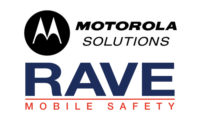As a pharmaceutical company, AstraZeneca is a 24/7 operation. Its research and manufacturing facilities work around the clock to bring medicines to patients worldwide. Interruptions to lab activities and production processes can cause lost research and production delays, directly impacting people who need therapies. There is no margin of error, so efficient incident response is a top priority.
AstraZeneca’s North American hub is its Gaithersburg, Md., complex, comprising 10 buildings with 1.5 million square feet of administrative, research and manufacturing space. It is home to 4,000 employees exploring target biology, protein engineering, translational science, personalized healthcare and biopharmaceutical and clinical development. It also has an on-campus childcare facility, a gym and recreational facilities.
This hive of activity is monitored and protected by a team of 40 security professionals operating out of a state-of-the-art command center monitoring access control, video security, and answering email and phone calls from employees and visitors alike. A supervisor guides procedural protocols and a dedicated site manager is responsible for security staff on behalf of AstraZeneca’s service provider, Allied Universal. Brooks Cucuel, the company’s director of regional security for the Americas, was previously in charge of security and business resilience at Gaithersburg, now co-manages with James Lee, site security and emergency response manager, AstraZeneca.
The command center was Brooks’ brainchild and absolutely a step in the right direction, and AstraZeneca wanted to build on that in a few different ways to improve emergency management:
- Voice over Internet Protocol (VoIP) system sent email notifications to the security management team whenever someone dialed 9-1-1. Assessing the authenticity of emergency calls required significant time and effort, which the team wanted to reduce.
- The team had more than 30 printed emergency contact lists with calling trees for different types of emergencies, everything from power outages to fires. The team call the numbers to alert the appropriate parties individually, hoping people would pick up the phone.
- The team used an alert messaging system to notify business continuity and crisis management teams, but it required complex configuration to ensure messages reached the right people and the platform training was lengthy.
- During one power outage, Brooks’ controllers were going through their calling trees as usual, and Brooks was simultaneously receiving calls from the executive team asking for updates. The team wanted to move faster, and in 2017, Brooks replaced the previous system with Rave Alert, a Motorola Solutions technology.
The team migrated its 30-plus calling lists into Rave Alert templates, making sure to update people and departments in the process. Because response rates for texts are much higher than phone calls, the team also set up a list of email and text message triggers so it could supplement or replace voice alerts with today’s most preferred methods of communication.
The team piloted Rave Alert for a year with 300 people, and it was a resounding success. Everyone agreed the command center had established a working system that gave everyone visibility into the team’s emergency response efforts, and the command center team shifted their focus to emergency response instead of worrying about whether notifications reached the right people.
One of the reasons the team chose Rave Alert was because of its scalability, and after the trial, the team rolled out Rave Alert across the entire campus in 2018. The technology allows the team to manage multiple communications streams targeting specific buildings and groups within the facility.
Rave Alert also leverages the Common Alerting Protocol (CAP) to forward emergency messages, like tornado warnings, from public authorities to various channels including campus signage.
The team became part of Rave Alert’s Customer Advisory Board, and they regularly solicit feedback and updates on their technology roadmap. The team tells them what works and what doesn’t, and they incorporate the input into future releases. In turn, the team can plan its deployments to take advantage of features that are in the pipeline.
“Automating emergency notifications saves precious time and allows our emergency teams to dedicate more efforts to preparation,” said Lee.
It used to be that command center phone lines were filled with people asking for updates during a crisis. The team had to provide information and clarification while trying to manage the situation, and emergency response managers had to juggle several responsibilities while walking personnel through crisis checklists. Now those actions happen automatically. The teams managers can monitor unfolding situations from anywhere, and they don’t have to leave meetings or interrupt their plans when they’re out of the office. Everything runs smoothly, and they’ve reduced the chance of human error because the response teams must check off items as they complete them.
The team analyzed response times before and after deploying Rave solutions. In the event of a power outage, it used to take a command center staffer 12–15 minutes to get through the old call trees and checklists. With Alert and Collaboration, it takes two minutes to update the template and click send. The system will automatically message and email the necessary personnel while generating location-specific and site-wide emergency notifications.
“It’s easier for people to think on their feet in a crisis if you present them with a clear set of action items or alternatives,” said Lee.
The team’s transformation began with buy-in from the executive team. The team engaged end users and stakeholders across campus, and showed them how Rave Alert Collaborate addressed their needs while fitting in with its corporate culture and values.
Using a great set of solutions, Brooks and Lee have launched mass communications as a force multiplier at AstraZeneca’s Gaithersburg campus. The team has improved its response posture by communicating timely incident information to the leadership team and all relevant stakeholders. The team resolves situations faster because it no longer managing phone calls or clearing up miscommunications. The team has improved in-the moment decision-making, put everyone on the same page, and set up a region-wide backend so it can replicate this success at AstraZeneca’s other North American facilities.
For more information, visit: ravemobilesafety.com.







